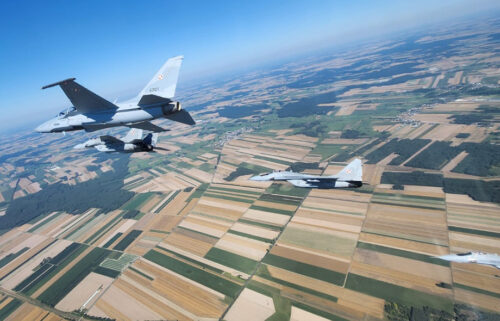The Polish Air Force’s plan to swiftly modernise its fighter fleet has hit a snag. Delivery of 36 FA-50PL light fighters, a deal valued at nearly $3.3 billion, has been postponed according to Wnp.pl. The initial target of receiving the first FA-50PLs in 2025 is no longer feasible. This setback means Warsaw’s ambition to have all 36 aircraft operational by 2028 has been pushed back.

Photo: KAI
These delays are causing apprehension about the programme, which is pivotal for Poland to bolster its air defences in the face of escalating threats from Russia. The Polish Air Force is undergoing a significant transformation, retiring Soviet-era aircraft and striving to modernise its fleet. Warsaw has placed an order for 32 F-35As, with the first aircraft arriving in January 2023. However, as the F-35s are being delivered incrementally, the FA-50s were seen as a crucial stopgap solution to address the capability gap.
Poland received its first 12 FA-50s in 2023, but these are the GF (Gap Filler) configuration, primarily for training purposes. The FA-50PLs, on the other hand, were intended to be fully operational combat aircraft. Poland requested specific modifications for the aircraft, including the capacity to carry AIM-120 AMRAAM air-to-air missiles.
However, these modifications have proven more intricate and costly than initially anticipated. Integrating the AIM-120 AMRAAM, specifically, requires approval from the U.S., the missile manufacturer’s government. Chang Jae Lee, Korea Aerospace Industries’s (KAI) director for Central Europe, indicated that the decision to permit integration ultimately rests with Washington.
It’s important to note that the FA-50GFs were drawn from the existing production line of the Republic of Korea Air Force (ROKAF), which explains their swift delivery. In contrast, the FA-50PLs necessitate extensive modifications to meet Poland’s unique specifications, resulting in the delays.
The Inspectorate for Armed Forces Support has acknowledged the delays, attributing them to the difficulties in implementing the desired modifications. These delays have sparked concerns in Poland, raising questions about whether the Ministry of Defence was aware of the potential issues before signing the contract.
The FA-50PLs were envisioned to play a crucial role in alleviating the strain on Poland’s current F-16 fleet. The strategy was to establish a “conversion squadron” using the FA-50PLs, leveraging the similarities between the two aircraft to reduce the training burden on the F-16s. This would have enabled the F-16s to be deployed for more challenging operational missions while extending their operational lifespan.
With the delays, the Polish Air Force is grappling with a mounting challenge in meeting its training requirements. The service needs to train around 30 new pilots annually. While the existing M-346 Master advanced jet trainers can handle some of the training, their capacity is limited.
The delays also underscore the strain on Poland’s military maintenance personnel. Incorporating a new aircraft type into the inventory adds complexity and demands specialised training and equipment. With the FA-50PLs delayed, the workload on maintenance crews, already stretched by the arrival of the F-35, is likely to escalate.
Currently, the future of the FA-50PL programme remains uncertain. While KAI delivered the first 12 FA-50GFs very rapidly, the more intricate modifications required for the PL variant have emerged as a significant hurdle. It remains to be seen whether KAI and Warsaw can surmount these obstacles and deliver the remaining 24 aircraft. In the meantime, the Polish Air Force will have to contend with a widening capability gap as it awaits its new fighters.
For more information, hit the Source below
The first F-35A for Poland wasn’t delivered in January of last year, instead, the first one was unveiled this year.